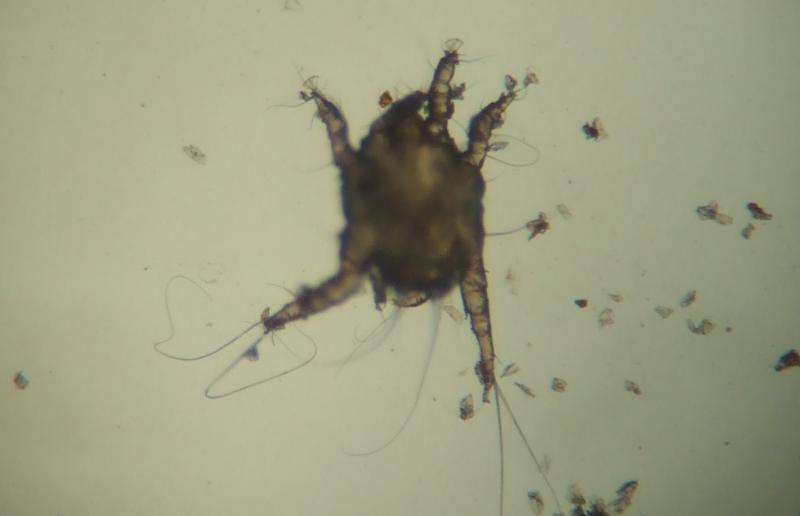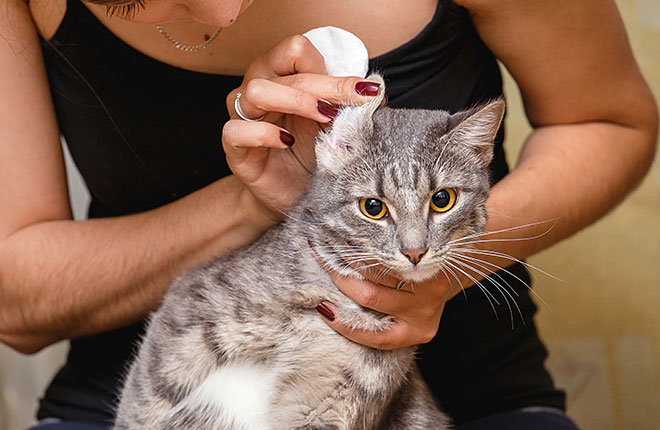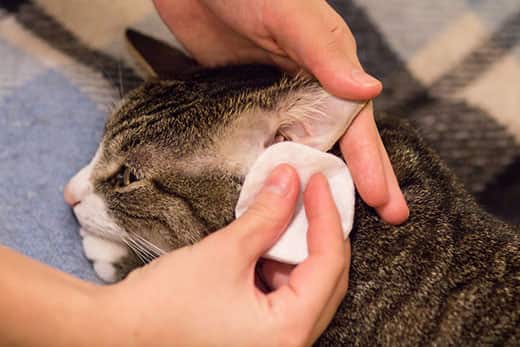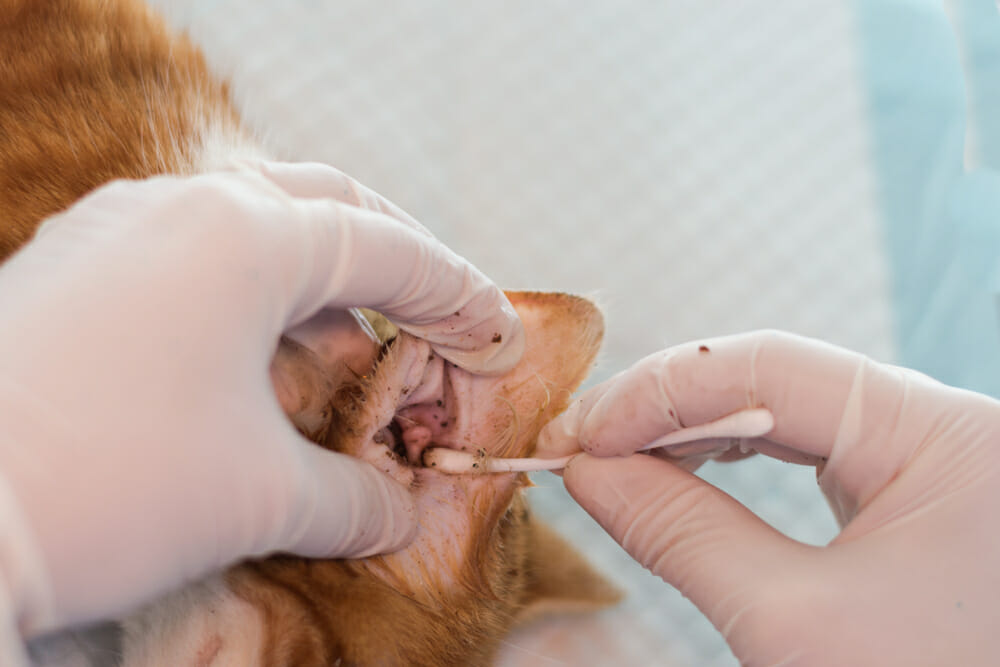Ear mites are every cat’s worst nightmare. They may be tiny and incapable of flying but these little mini-beasts can make life a living hell for your poor feline friend. If you see her shaking her head and trying to scratch the ears constantly, there’s a high chance that she has mites in her ears. The bugs have mastered the art of crawling to their host and putting up shop in their ears. Once they are comfortable, they will breed.
This is where things get uncomfortable for the kitty. Granted, the bugs themselves don’t pose much danger to your cat. However, repeated scratching can rupture the blood vessels which may need surgery to repair the damage. In short, your kitty needs help to evict unwelcome visitors. Before you roll up your sleeves, you might want to find out if you can catch the mites from the pet. That’s where we come in. Here is a detailed post that addresses the topic.
What Are Ear Mites?

Also called Otodected Cynotis, ear mites are tiny parasites that inhabit the ear canal. They feed off of skin debris, oil, and wax in the ear. As soon as they inhabit the ear, they will lay eggs that hatch after 21 days. These become adults soon enough and reproduce as well keeping the chain going. Their presence causes itchiness, inflammation, and irritation of the skin. If they get a chance, the ugly insects will crawl to other parts of the body as well.
While the mites are too small for the human eye, you can tell they have infested your kitty by how they make her behave. Head shaking and ear scratching are the most common symptoms of ear mites. The cat may also spot dark crusty or waxy discharge (looks like coffee beans) from the ears and suffer irritation from the rest of her body apart from the ears.
Can Ear Mites Transfer To Humans?

Ear mites love taking up residence in animals. However, the parasites can also hang on to humans according to Healthline. The situation is not very common but it can happen. If you are too close to your pet, you can get an infestation too. Ear mites have one goal in life: to get a host to live in and feed on. Sometimes that means residing in the human ear even if animals are better hosts.
You may not get the pests directly from the cat but rather her bedding or the furniture at home. Even without a pet of your own, you can get infected if you interact with a neighbor’s kitty at close range. The symptoms of ear mites in humans are the same as those of a cat. These include itchiness in the ear, redness, ear irritation, and production of a dark discharge from the ear.
To get rid of the nasty bugs, you want to clean the ear to get rid of wax or debris. Next, apply a topical medication according to the dosage suggested by your doctor. You should feel relief within a couple of days. Going forward, you bwant to eliminate the mites from your kitty as well. This will take care of the problem permanently.
Are Ear Mites Harmful To Humans?
Like cats, humans suffer irritations if ear mites put up shop in their ear canals. If not treated, these can cause intense scratching that will graduate to ear or skin infections. Although rare, the ear canal can also be obstructed by the dark waxy discharge impairing hearing.
How Long Does It Take To Get Rid Of Ear Mites In Cats?
The first step to treating ear mites from your feline friend is to get a proper diagnosis. Collect a sample of the ear discharge and have the vet examine it under a microscope. If they make a positive confirmation, the next thing to do is clean the ears thoroughly.
Cleaning should be done carefully to avoid pushing the bugs further into the canal or injuring the ear. A professional vet should be able to do this in no time. They will also suggest topical ointments and repeated medications.
If you are using a one-time medication, the problem should reduce greatly after a single dose. However, you might have to wait for three weeks to clear the infection completely.
How Long Does It Take For Ear Mites To Go Away After Treatment?

It depends on the intensity of treatment, the extent of the problem, protection strategies against further infestation, and other factors. For example, if the ear is not cleaned properly to get rid of all discharge, you risk having a re-occurrence. If the bugs’ eggs stick around, they may end up feeding on the debris and multiply. If you already have an infection, you will need to wait until 3 weeks to get rid of it once and for all.
On average, the bugs will go away after a single round of thorough cleaning the ear and using a one-time dosage of a good topical ointment. You should feel relief within a few days. However, you want to make sure that the ears are thoroughly cleaned and that the house is mite-proof.
Can Indoor Cats Get Ear Mites?
Outdoor cats are more likely to get ear mites. Being out there exposes them to different environments and animals. She can pick them up from a dog, horse, cow, you name it. That said, indoor cats aren’t 100% safe either. All it takes is one animal or person transferring the bugs to the cat. Other pets at home (dogs, other cats, or horses) can also catch something and later transfer to the indoor kitty. This can happen as the pets play with each other, groom, or any other physical interaction. The indoor cat can also have ear mites from her trips outdoors. As she leaves the house to mate with the neighbor’s cat or play at the outdoor dog kennel, a few bugs can crawl to her ear.
Parting Thoughts
No pet parent wants to see their kitty scratching and shaking her head because of having ear mites. However, before you go in and help her, realize that you can catch the horrible bugs as well. Call the vet to treat the cat before the bugs are transferred to you.

Hi! I am Eleanor Price. I started this website after my cat, Louie, almost died from a case of botulism (a type of food poisoning often caused by bacteria that grow on food items). Turned out that my cat’s diet was the problem. I have made it my duty to provide the best information and recommendations about everything cat lovers need to know about their felines’ health and wellbeing. My goal is to find the most informative content on anything feline-related and share it with fellow hardworking kitty lovers.

